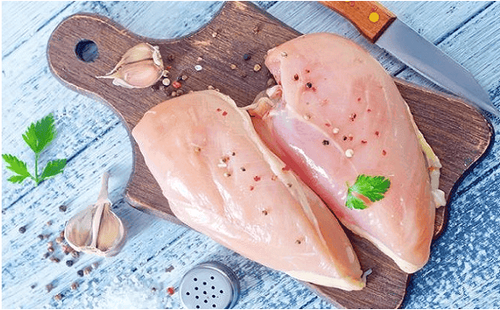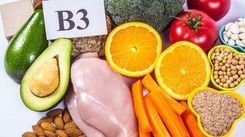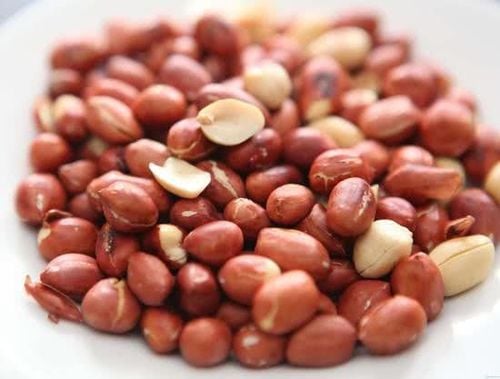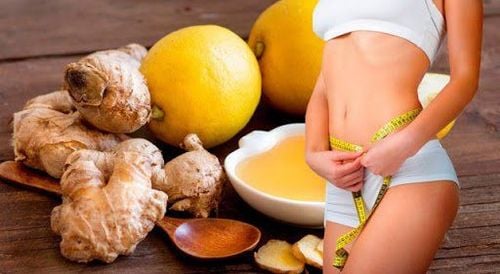Chicken meat is a highly nutritious food that can bring many impressive health benefits. It is rich in protein and low in calories, making it particularly suitable for bodybuilders, those looking to lose weight, maintain muscle, or enhance athletic performance. Ideally, you should base your consumption of chicken parts on specific health goals to make the most appropriate choice.
1. How much protein is in chicken?
Chicken is one of the most commonly consumed meats in many people’s daily diets. It is especially beneficial for fitness enthusiasts as it provides a rich source of protein.
The protein content in chicken can help you achieve health and fitness goals such as maintaining and building muscle or reducing fat. However, the protein content varies depending on the chicken part, including the breast, thighs, wings, and drumsticks. Each part offers different amounts of protein intakes, fat, and calories for various purposes.
1.1. Protein Content in Chicken Breast
Chicken breast is one of the most commonly consumed parts of the chicken. A cooked chicken breast without skin (172 grams) provides about 54 grams of protein, equivalent to 31 grams of protein per 100 grams of chicken breast.
Additionally, one chicken breast contains 284 calories, or 165 calories per 100 grams. Of this, 50% of the calories come from protein, and 20% from fat.
Chicken breast is particularly beneficial for individuals who exercise regularly and aim to lose weight. Its high protein and low-calorie content allow you to consume it without worrying about excessive calorie intake.
1.2. Protein Content in Chicken Thighs
A cooked, boneless, and skinless chicken thigh (52 grams) contains about 13.5 grams of protein, equivalent to 26 grams of protein per 100 grams of chicken thighs.
Each chicken thigh provides about 109 calories, or 209 calories per 100 grams. Of this, 53% of the calories come from protein, and 47% from fat. Chicken thighs are slightly darker in color compared to chicken breasts. This is because chicken legs are more active and contain more myoglobin—a type of protein commonly found in the muscle tissue of animals. Myoglobin molecules help supply the oxygen needed for muscles to work, giving them a redder color. Many people also find that the darker color of chicken thighs enhances their flavor.

1.3. Protein Content in Chicken Drumsticks
Chicken legs consist of two main parts: the thighs and the drumsticks. Specifically, drumsticks, or chicken lower legs, are located on the lower part of the chicken leg. On average of the protein intakes, 44 grams of skinless, boneless chicken drumstick contains about 12.4 grams of protein, equivalent to 28.3 grams of protein per 100 grams of drumsticks. Each drumstick provides about 76 calories, or 172 calories per 100 grams. Of this, 70% of the calories come from protein, and 30% from fat. Most people eat drumsticks with the skin on. A drumstick with skin typically contains 112 calories, with 53% of the calories coming from protein and 47% from fat.
1.4. Protein Content in Chicken Wings
Chicken wings consist of three main parts: the drumette, the wingette, and the wing tip. Chicken wings are often consumed as snacks or fast food. A skinless, boneless chicken wing (21 grams) contains 6.4 grams of protein, equivalent to 30.5 grams of protein per 100 grams of chicken wings. Additionally, one chicken wing provides about 42 calories, or 203 calories per 100 grams. Of this, 64% of the calories come from protein, and the remaining 36% come from fat. A chicken wing with skin contains about 99 calories, with 39% of the calories coming from protein and 61% from fat.
2. Which Part of Chicken Should You Eat for Maximum Nutritional Benefits?
The part of the chicken you should consume depends on your health condition and fitness goals. While most chicken parts are excellent protein sources, some parts may provide less protein compared to others. For instance, the excess fat in thighs, drumsticks, and wings can benefit certain health goals but may hinder others.
For Weight Loss: Chicken breast is the best choice. It is the leanest part of the chicken, providing the highest protein content while being the lowest in calories. This makes chicken breast an ideal food for bodybuilders due to its low calories content. Bodybuilders who must closely monitor calorie consumption during competition preparation when body fat levels need to be minimized.
However, individuals following Keto or Low-Carb diets may benefit from consuming fattier chicken parts, as they require more fat in their diet.

For gaining weight or building muscle, you need to consume more calories than your body burns daily. Nutrition experts recommend eating fattier chicken parts to increase calorie intake.
For muscle maintenance and recovery: Chicken breast is ideal for maintaining muscle mass and improving muscle recovery. It provides the highest protein content per weight, which is crucial for these goals.
To arrange an appointment, please call HOTLINE or make your reservation directly HERE. You may also download the MyVinmec app to schedule appointments faster and manage your reservations more conveniently.
References: healthline.com, nutrition.org.u













